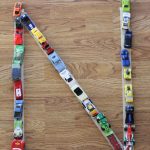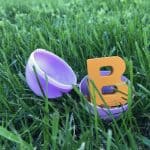Letter Boxes & Scavenger Hunt

Making letter recognition meaningful for preschoolers is crucial. Getting your child to automatically recognize letters is great, but children will retain information much more once they have had a variety of experiences with those letters. Making it fun and multi-sensory will ensure that they are understanding what they are learning.
We have tons of baby food containers right now, so I thought what better way to recycle them than for them to be used as letter boxes! This activity is a little above Big Brother’s head right now since he is only 2 1/2, but I thought I could simplify it enough that he would at least have fun participating in the scavenger hunt.


2. Let your child put the letter stickers on each box. I put them on myself because Big Brother doesn’t have the fine-motor control yet to manipulate these particular stickers without tearing them. I chose to do the letters that Big Brother hears on a daily basis–“D” for Daddy, “M” for Mommy, and “C” for Caleb. You can do as many or as few boxes as you would like.

3. Go on a scavenger hunt and start filling them! Big Brother obviously needed a lot of direction with my emphasizing the beginning sounds of the items we chose. Older children would be able to do this activity more independently. Opening and closing the boxes turned out to be great fine-motor practice for Big Brother. This also services as a learning opportunity for sizes–whether things are too big or too little to fit in the boxes.
C for car…

and carrot!








I work with autism children and I’m trying to find activities for these children to do. some are severe autism that doen’t like you in their space if you know of anything or have any thing that i can use i would appreciate it thanks Tammy
Oh I love this idea. I have a TON of these containers and have been thinking of something to do with them. Pinned this. Thanks Jenae. You are awesome!!
You can also find a great choice of miniatures at MIMIAbyMIA. There are various options at a great price. https://www.etsy.com/es/shop/MIMIAbyMIA
Am expecting two great nephews at the weekend, aged 4 & 6 and need some ideas!